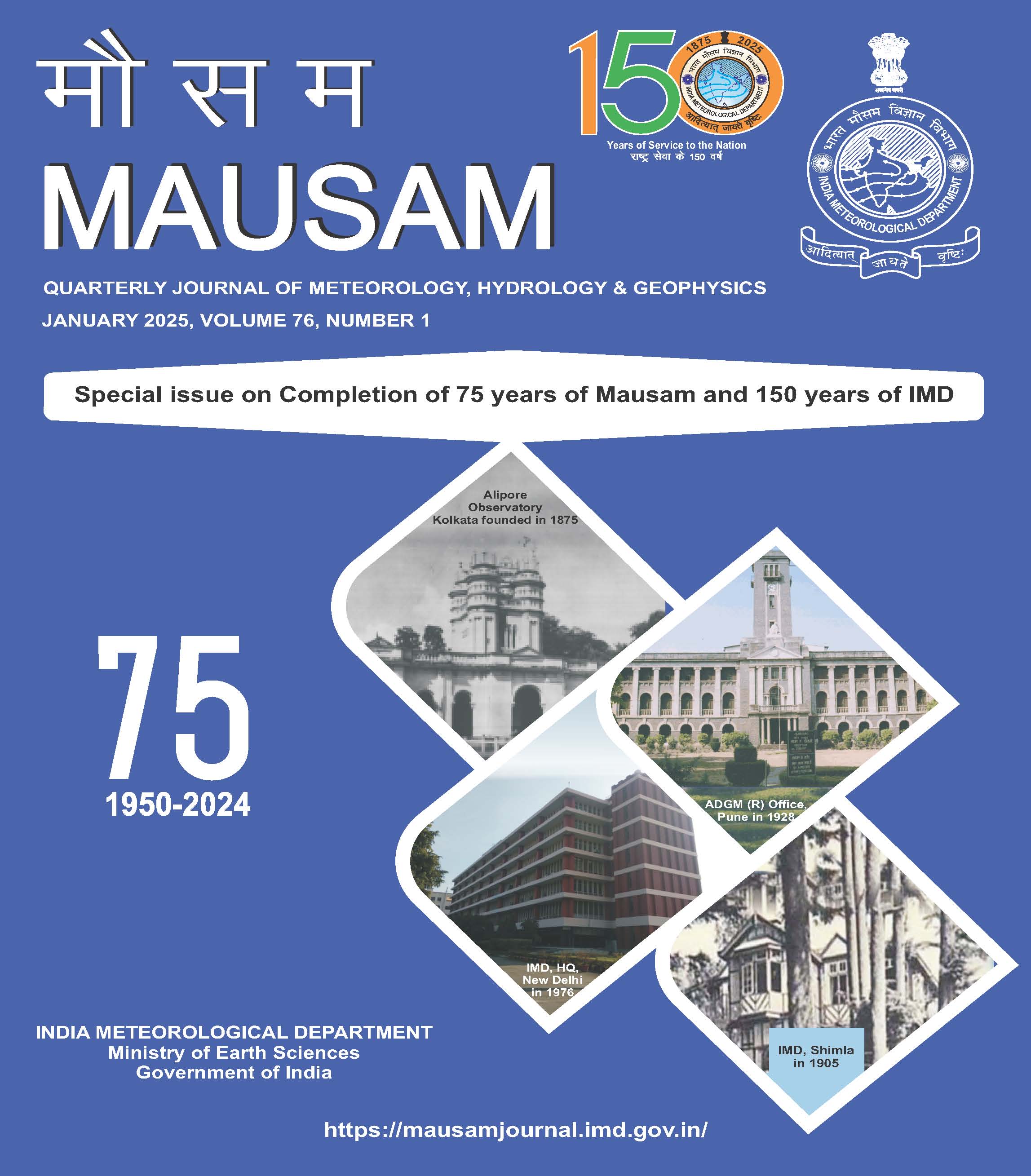Evolution of Aviation Meteorological services in India
DOI:
https://doi.org/10.54302/mausam.v76i1.6480Abstract
Weather plays critical role in the safety and operational efficiency of aircraft operation.As early as 1913 India Meteorological Department started taking upper air observation to support aviation and first aviation forecast was issued in 1921 for the Royal Air Force (RAF). While evolution of Aviation Meteorological services in early years was primarily driven by military aviation, it was post second World war rapid growth of commercial aviation gave boost to Aviation Meteorological services in India. India Meteorological Department kept pace with growing demands of aviation sector by modernising its observing systems, communication and forecasting. The On Line Briefing System (OLBS) has been a boon to low cost carriers. IMD delegates have been atively contributing to ICAO proceedings for the efficient international aviation services. IMD is also working closely with Met Services of the Indian Air Force and Indian Navy to provide coordinated services at Joint User Airfields under UDAN scheme. To meet future requirements. IMD is in the process of developing Decision Support System and implementing MET-ATM to give reliable warning against severe aviation hazards. This will contribute to safety and enhance operational efficiency of airlines and airports.In view of climate change, Aviation community and policy makers also need to take in to account the impact on climate change on airport management and aircraft operations.
Downloads
Published
How to Cite
Issue
Section
License
Copyright (c) 2025 MAUSAM

This work is licensed under a Creative Commons Attribution-NonCommercial 4.0 International License.
All articles published by MAUSAM are licensed under the Creative Commons Attribution 4.0 International License. This permits anyone.
Anyone is free:
- To Share - to copy, distribute and transmit the work
- To Remix - to adapt the work.
Under the following conditions:
- Share - copy and redistribute the material in any medium or format
- Adapt - remix, transform, and build upon the material for any purpose, even
commercially.



